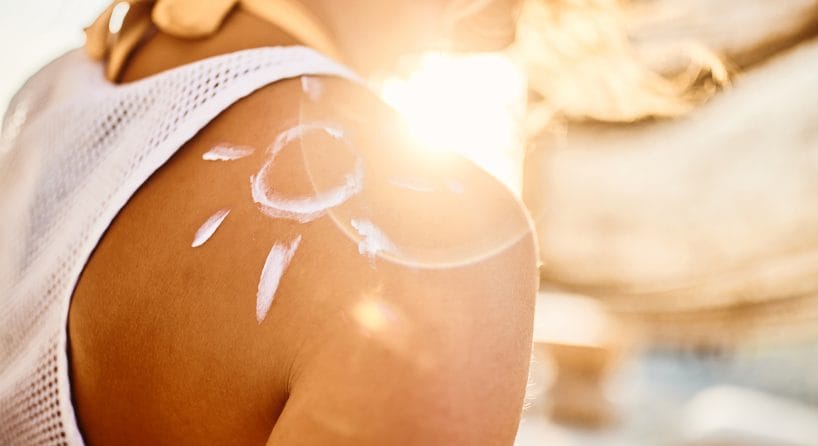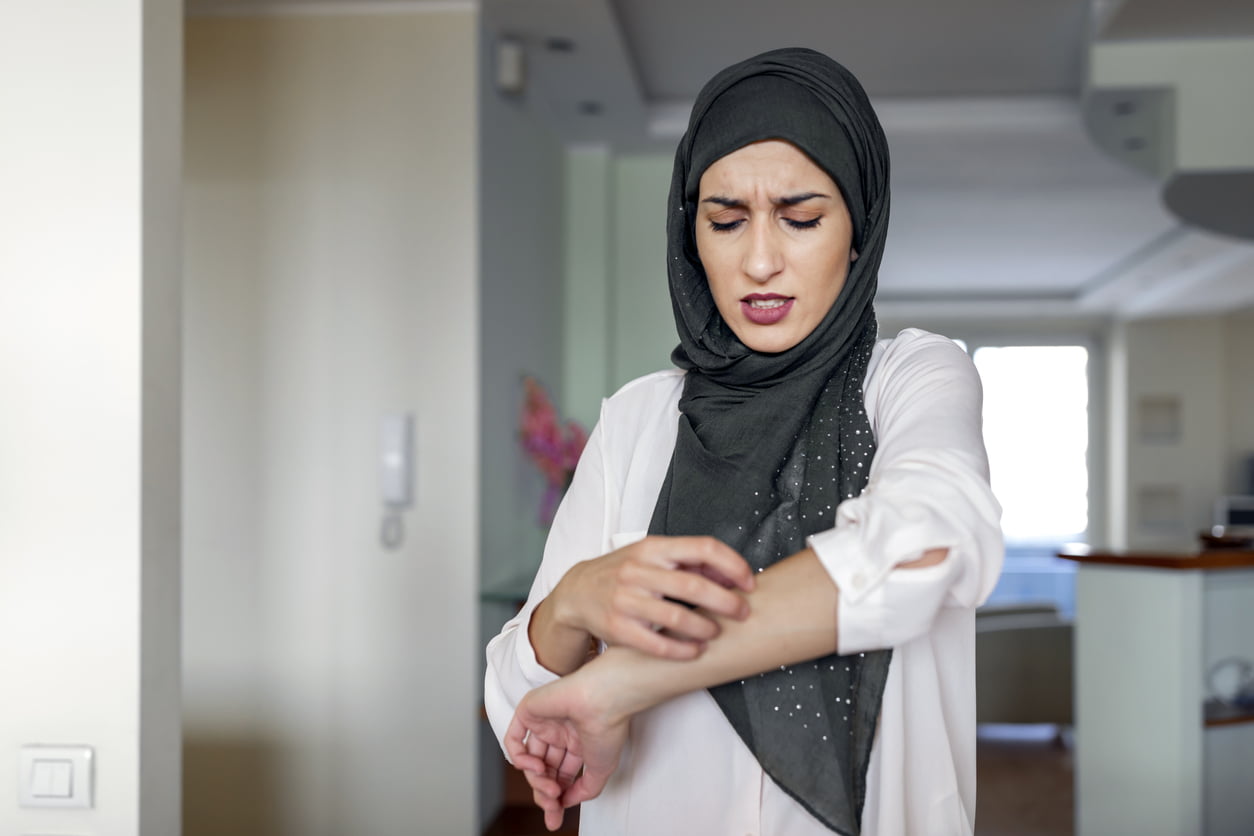
Medicinal Myths and Other Health Hazards: Suncare
When it comes to sun protection, the amount of information out there can be overwhelming. From scaremongering about toxicity in sunscreens, to the belief that you don’t burn on cloudy days, myths about suncare are everywhere.
Our IPA pharmacies are dedicated to keeping our community healthy, so let’s set the record straight by busting some common suncare myths and help you make sure you’re properly protected when you’re outdoors.
Myth 1: “You Don’t Need Sunscreen or a Hat on Cloudy Days”
This might be the most common myth out there, and it’s also one of the most dangerous! Just because it’s cloudy doesn’t mean your skin is safe. The same thing goes if you’re in the shade.
Over 90% of the sun’s ultraviolet (UV) rays can penetrate light clouds and reach your skin. And thick cloud doesn’t completely block UV radiation—at least 25% of UV rays can still get through heavy cloud cover.1 So even on a grey, overcast day, you’re still at risk of sunburn and long-term skin damage.
Remember too, that when UV radiation passes through the earth’s atmosphere, some of it will bounce around off molecules and particles in the air. This means that even if you’re in the shade, you may still be exposed to scattered or indirect UV radiation.1
The takeaway? Make sunscreen a daily habit, rain or shine.
Myth 2: “People with Darker Skin Don’t Need Sunscreen”
This myth is not only false but also harmful. While it’s true that people with darker skin have more melanin, which offers some protection against UV rays, it’s not enough to prevent sunburn, skin cancer, or premature aging.2
Everyone, regardless of skin tone, should use sunscreen with at least SPF 50 to protect against harmful UV radiation. A naturally darker skin provides some defence, but it’s no substitute for sunscreen.
Myth 3: “SPF 50 Sunscreen is Twice as Effective as SPF 25”
The numbers on your sunscreen bottle can be confusing, but it’s worth understanding them. The SPF, or Sun Protection Factor, measures how well the product protects your skin from UVB rays. It would be easy to assume that double the SPF rating would give double the protection, but it doesn’t work like that. Here’s how the SPF numbers actually work:
SPF 30 blocks about 96.7% of UVB rays and provides 30 times more protection to the exposed skin for a fair-skinned person than if the skin is unprotected. SPF 50 blocks about 98% of UVB rays and provides 50 times more protection to the exposed skin for a fair-skinned person. 4 5
So, if the skin reddens without protection in 10 minutes, then applying SPF 50 sunscreen theoretically provides protection for up to 500 minutes (10 x 50) if applied correctly. 3 4 5 But that would be in a perfect environment, which it won’t be. Other factors come into play, like wind, water, sweat, beach sand, towels, and so on. If you stay in the sun for 500 minutes (over eight hours!) only relying on one application of sunscreen, you are highly likely to burn!
In Australia, SPF rating labels are limited to 50, then go to “50+”. That’s because when a rating gets higher than 50, the benefits only increase minutely. 3 4 5 Labelling a product SPF 100 could be misleading, because it might be taken to imply that it gives double the protection, which isn’t the case. An SPF 100 sunscreen could only block a maximum of 1% to 2% more UVB than an SPF 50 product. 3 4 5
And that raises another important factor to be aware of: Not all SPF rated sunscreens protect against both UVA and UVB radiation. UVA and UVB differ from each other by how strong their energy is and by how deeply they enter the different layers of your skin, and both types are harmful. It’s highly recommended to choose a sunscreen that is “broad spectrum”, which means the product will protect you from both UVA and UVB rays. 3 4 5 Your local IPA Pharmacist or their team will be able to advise you of the best options.
But remember, no sunscreen can block 100% of UV rays, so it’s important to apply your sunscreen generously and reapply every two hours, especially after swimming or sweating.
Myth 4: “Sunscreen is Only for the Beach and Pool”
Sunscreen is often associated with beach days and lounging by the pool, but the truth is, you need sun protection anytime you’re outside. Whether you’re gardening or walking the dog, you’re exposed to UV rays.
And it goes further than that: While all types of commercial and automobile glass block the majority of UVB, the amount of UVA getting through depends on the type of glass. Laminated vehicle windscreens block most UVA as well as most UVB. But untinted tempered glass—commonly used for side and rear windows because it’s stronger and reduces shattering—allows the transmission of substantially more UVA radiation, up to 79% some estimates suggest. 6
While the risk of UV exposure through building window glass is minimal, again UVA radiation through windows can be a risk, especially to people who spend long periods of time close to an untinted window that is exposed to direct sun, or those who have a severe photosensitive skin disorder.6
The best solution is to make applying sunscreen part of your morning routine, just like brushing your teeth.
Myth 5: “A Base Tan Protects You from Sunburn”
A tan might look nice, but it’s not necessarily a sign of healthy skin. In fact, a tan is a sign that your skin has been damaged by UV radiation.8 And experts say that a “base tan” offers very minimal protection, equivalent to an SPF of about 3 or 4.9 It’s not enough to prevent sunburn or skin damage.
The bottom line is, any tanning is damaging to the skin, especially if it’s prolonged or frequent—sun damage accumulates over time— so tanning increases the risk of skin cancer.8 9
It’s always best to use a broad spectrum, high factor SPF sunscreen. Ask your local IPA Pharmacist or their team about the best options.
Myth 6: “Sunscreen Causes Vitamin D Deficiency”
Vitamin D is essential for bone health, and our bodies produce it when our skin is exposed to sunlight. However, the amount of sun exposure needed to produce adequate Vitamin D is minimal, and most people get enough through their diet and from just a few minutes outdoors on most days.10
The Cancer Council tells us that “Sensible sun protection does not put people at risk of Vitamin D deficiency.” And in fact, the body can only absorb a limited amount of Vitamin D at a time, so spending extra time in the sun will not increase Vitamin D levels but will increase your risk of skin cancer. 11
You can protect your skin with sunscreen and still get enough Vitamin D—just have a chat with your local IPA Pharmacist if you have concerns.
Myth 7: “Sunscreen is Toxic”
There can be a lot of scaremongering out there about sunscreen ingredients, but the truth is, sunscreen is safe and necessary for protecting your skin.
The Therapeutic Goods Administration (TGA) regulates sunscreens in Australia, checking that each product uses only approved ingredients, including any chemicals, that have been assessed for quality and safety. There is now very strong evidence from many rigorous scientific reviews, that the list of commonly used active ingredients in sunscreen do not pose a concern for human health.12
But if you’re concerned about specific ingredients, look for sunscreens that use physical blockers like zinc oxide or titanium dioxide. These days, many of these products are micronized to break them down into nanoparticles, making them easy to apply and helping them disappear into the skin, unlike the greasy, white sunblocks of the past. And fear not, these nanoparticles have not been shown to penetrate beyond the level of the skin into the bloodstream, which means that they are unlikely to create health risks.13
Final Thoughts: Suncare is Self-Care
We’ve looked mainly at the myths surrounding skin protection in this article, but remember, your eyes need protection from the sun too, and not just to cut glare. UV radiation can cause short-term eye problems, like excessive blinking, swelling and difficulty looking at strong light. Exposure to UV over time can cause serious or permanent eye damage.14
But there’s an easy solution: Wear category 2 or 3 wrap-around sunglasses for everyday use, and category 4 sunnies for high glare environments such as on water, on snowfields, in deserts, or on mountains. Category 1 and 2 sunglasses offer little to no UV protection—they’re simply fashion accessories. But always be conscious of the light conditions and make sure you’re not limiting your vision with glasses that are too dark for the conditions, especially when driving.15
Taking care of your skin and eyes isn’t just about looking good—it’s about staying healthy. Sun protection is crucial for preventing skin cancer, premature aging, and other sun-related damage. By debunking these common myths, we hope you feel more confident in your suncare routine.
And remember, sunscreen is just one part of sun protection. As the Cancer Council advises:
- “Slip on covering clothing
- Slop on SPF 50 or SPF 50+, broad-spectrum, water-resistant sunscreen
- Slap on a hat
- Seek shade; and
- Slide on some sunglasses.”16
Your skin, your eyes, and the rest of your body will thank you!
Who are IPA Pharmacists?
IPA Pharmacists are part of Australia’s largest network of independent pharmacies. They offer personalised healthcare and expertise in medicines. They specialise in various health aspects, such as sleep and diabetes, and are dedicated to supporting your wellness journey.
With a network of over 1,100 pharmacies and growing, an IPA pharmacy near you is ready to provide exceptional advice, services, and products to enhance your health outcomes.
References:
- “Shade Guidelines” – Sunsmart.com.au
- “Sunscreen for dark skin: Do you really need it?” – MoleMap.net.au
- “Why are SPF Ratings Limited to 50?” – SunnySkin.com
- “How Does Sunscreen Work?” – Cancer Council NSW
- “Sun Protection Using Sunscreen” – Australian Radiation Protection and Nuclear Safety Agency (ARPANSA)
- “Fact sheet: Tinted windows” – Cancer Council
- “Sun protection 101” – Cancer Council
- “Bronzed Aussies don’t link tanning with skin cancer” Cancer Council
- “Are There Benefits to a “Base” Tan?” – Harvard Health Publishing
- “Vitamin D” – Cancer Council
- “Vitamin D” – Better Health Channel (Victoria State Government)
- “Are chemical sunscreens safe to use?” – iHeard: Cancer Council
- “The science of sunscreen” – Harvard Health Publishing
- “Protecting your eyes from the sun” – Cancer Council NSW
- “Sun protection using sunglasses” – Australian Radiation Protection and Nuclear Safety Agency (ARPANSA)
- “Be SunSmart” – Cancer Council
Important Information
The information provided on this website is shared in good faith for general informational purposes only. It does not constitute an endorsement or recommendation of any specific treatment, product, or service, nor is it a substitute for professional advice. Always consult with qualified professionals regarding matters related to your health, wellbeing, or other personal concerns. While every effort is made to ensure the accuracy and reliability of the information, we cannot accept responsibility for any injury, loss, damage, or consequences resulting from its use.



